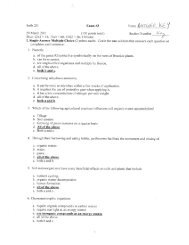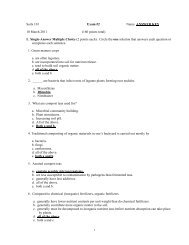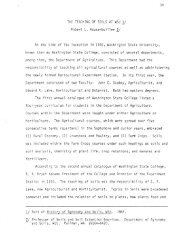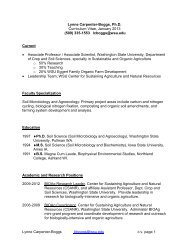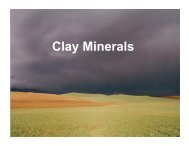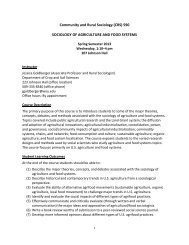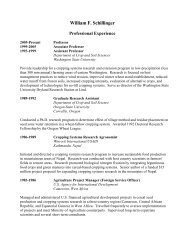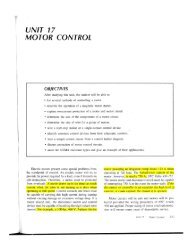2012 Dryland Field Day Abstracts - Dept. of Crop and Soil Sciences ...
2012 Dryland Field Day Abstracts - Dept. of Crop and Soil Sciences ...
2012 Dryland Field Day Abstracts - Dept. of Crop and Soil Sciences ...
Create successful ePaper yourself
Turn your PDF publications into a flip-book with our unique Google optimized e-Paper software.
Page 58<br />
<strong>2012</strong> <strong>Field</strong> <strong>Day</strong> <strong>Abstracts</strong>: Highlights <strong>of</strong> Research Progress<br />
allele in Arabidopsis. Even with this 30% increase in hypocotyl length in camelina, we have shown that these larger seeds <strong>and</strong> taller<br />
seedlings can dramatically enhance emergence from deep planting (8 cm) in dry soil (Figure 2).<br />
Fig. 1. Seed size is increased in Camelina The<br />
average weight <strong>of</strong> 100 wild-type (control)<br />
seeds is compared to the transgenic line used<br />
in Figure 2.<br />
Development <strong>of</strong> Camelina Lines Resistant to Group 2 Herbicides<br />
Scot Hulbert, Ian Burke, <strong>and</strong> Ron Sloot, WSU<br />
In the high rainfall, annual cropping zone, Group 2 residual herbicides (imidazolinones <strong>and</strong> sulfonylureas) continue to pose a major<br />
constraint to producing oilseed crops, particularly canola <strong>and</strong> camelina. After extensive field, greenhouse <strong>and</strong> laboratory testing,<br />
we have identified one mutant population in camelina that shows resistance to all Group 2 herbicides tested. This mutant occurred<br />
in the Cheyenne background <strong>and</strong> we have crossed it to Calena. Several large F2 families were planted in the field in June 2011 <strong>and</strong><br />
sprayed with Pursuit. Seed from vigorous plants were harvested<br />
<strong>and</strong> planted in duplicate plots at Lind in late winter 2011. Seeds<br />
from single plants were again selected <strong>and</strong> were planted in yield<br />
plots this spring.<br />
Biennial Canola – A Three-for One Forage + Oil + Meal <strong>Crop</strong><br />
Fig. 2. Camelina plants expressing the Arabidopsis sob3-6<br />
mutation can emerge from deep planting in dry soil. Ten<br />
seeds (left: non-transgenic, right: transgenic) were planted<br />
on 1 cm <strong>of</strong> moist Palouse silt/loam <strong>and</strong> then covered with 8<br />
cm <strong>of</strong> dry silt/loam. All seeds germinated however, no wild<br />
type seeds could emerge from this deep planting. Five<br />
transgenic seeds emerged <strong>and</strong> three survived. This experiment<br />
has been repeated twice.<br />
We hope to release a WSU cultivar in 2013 <strong>and</strong> we have already<br />
sent seed <strong>of</strong> the original mutant in the Cheyenne background to<br />
two different commercial breeding programs. We expect the SM4<br />
mutation to be incorporated into several widely grown cultivars<br />
in the future, <strong>and</strong> expect this to reduce risks associated with<br />
camelina production in most regions.<br />
Robert Kincaid 1 , Kris Johnson 1 , Bill Pan 2 , <strong>and</strong> Scot Hulbert 2 ; 1 <strong>Dept</strong>. Of Animal <strong>Sciences</strong>; 2 <strong>Dept</strong>. Of <strong>Crop</strong> <strong>and</strong> <strong>Soil</strong> <strong>Sciences</strong>, WSU<br />
Growing winter canola in eastern Washington is difficult without a fallow period or irrigation. St<strong>and</strong> establishment after crop<br />
harvest in late summer can be problematic due to low soil moisture, <strong>and</strong> if seeding dates are later than recommended for the<br />
region, the canola plants may be too small to survive low winter temperatures. Good st<strong>and</strong>s are not always easy to establish in late<br />
summer even when planting into fallow. A biennial canola study on 17 acres near Pullman examined early-planted, interseeded<br />
winter canola <strong>and</strong> spring peas as a potential source <strong>of</strong> forage, <strong>and</strong> a means <strong>of</strong> seeding into available soil moisture. Peas were<br />
planted on July 1, 2010, followed by canola seeding the next day. The field was swathed <strong>and</strong> windrows harvested on September 8,




